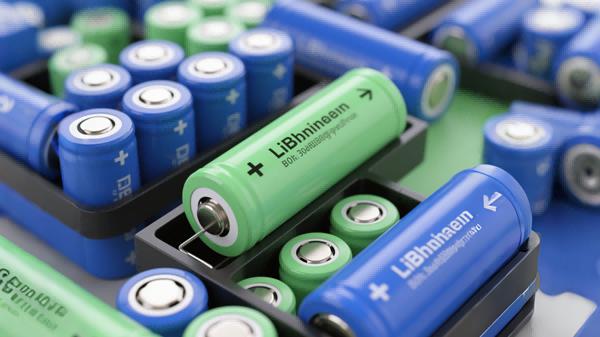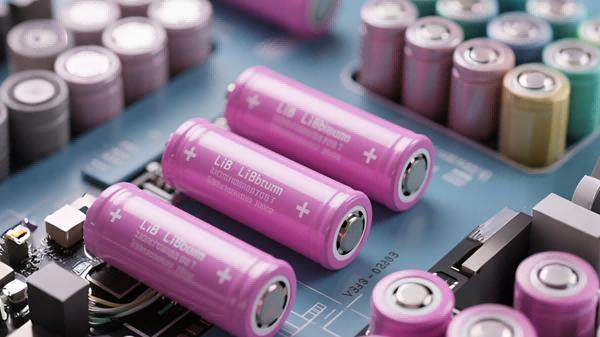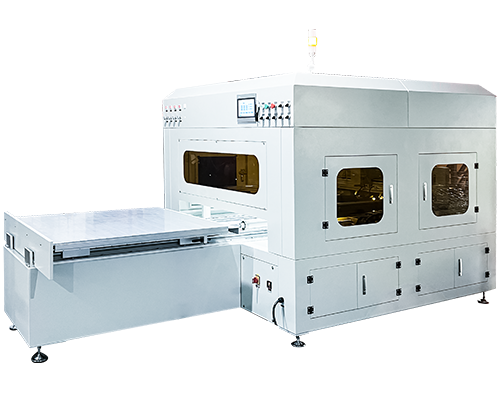Innovation of Lithium-ion Battery Electrode Materials
In today’s energy field, lithium-ion batteries (LiB) undoubtedly occupy a pivotal position. From the electronic devices we use in daily life to large-scale application scenarios such as electric vehicles and energy storage power stations, LiB plays a key role. Among the many factors that determine the performance of LiB, materials are the core of the core.
As the most basic design factor, materials are like a master key, opening the door to determining the electrochemical potential window, reaction chemistry (covering reaction kinetics and mechanism), and battery type (such as aqueous, non-aqueous, polymer or solid). Not only that, it also has a profound impact on the cyclability, thermal stability and overall performance of full-battery LiB. For this reason, researchers have invested a lot of energy in the development of new material structures for the main components of full-battery LiB.
Since the birth of LiB, its full-battery components have been deeply explored, and the research has always centered on how to improve materials. We all know that materials are the key to driving electrochemical reactions, which is directly related to whether high specific capacity and energy density can be achieved within the electrochemical potential window. Specifically, LiB is mainly composed of electrodes (including negative and positive electrodes), binders (mostly polymer materials), current collectors (commonly copper or aluminum metal foils), separators (such as polyolefin sheets), and electrolytes (mixtures of salts and liquids). The electronic and crystal structures, chemical properties, electrical and mechanical properties, and inherent conductivity of these components work together to play an indispensable role in building favorable reaction chemistry, enhancing thermal and mechanical stability, and improving the performance of full-cell LiB.

As one of the core components of LiB, the electrode is like the “heart” of the battery, directly determining the electrochemical potential window, specific capacity, energy and power density, comprehensive performance, and electrochemical reaction mechanism. Therefore, the design and improvement of electrode materials are of decisive significance for achieving the goal of high energy and power density. Ideally, the electrode should have high intrinsic conductivity to ensure efficient electron transmission; have a wide potential window to provide a wider space for electrochemical reactions; show excellent cycle and rate performance to ensure stable operation during multiple charge and discharge and rapid charge and discharge; be low-cost and easy to apply on a large scale; and have strong stability and safety to comprehensively improve the overall performance of LiB. Over the years, researchers have continuously explored and summarized two main design strategies, intrinsic and extrinsic, to achieve these ideal properties of LiB.
Intrinsic design strategy: tapping the intrinsic potential of materials
The intrinsic design strategy focuses on the internal structure and chemical composition of the material, mainly covering the development of stoichiometric composition, optimization of crystal defects, and control of crystal orientation.
Chemical composition: laying the foundation for material performance
The chemical composition is like the “soul” of the material. It determines the crystal structure, which in turn dominates key properties such as mechanical strength (including adhesion and cohesion), stability (structural, chemical and thermal aspects), phase change, and intrinsic conductivity (electrical and ionic conductivity). At the same time, it also clarifies the number of Li+ ions that can be inserted or extracted from the crystal structure, which directly affects the electrochemical performance of the electrode material. The structural unit can be regarded as the “gene” of the material. Through it, we can deeply understand the local chemical coordination and molecular chemistry, and then build the physical and chemical properties of the electrode. In-depth study of the relationship between the structural unit and these physical/chemical properties can provide key clues to reveal the charge transfer characteristics. The charge transfer characteristics are crucial to intrinsic properties such as structural/thermal stability, electronic/ionic conductivity, and Li+ ion transport. Therefore, it is imperative to design and develop structurally adjustable electrode materials that can accommodate more Li+ ions, improve intrinsic conductivity, widen the voltage window, enhance diffusion kinetics, and bring excellent electrochemical performance to LiB.

Point defects: performance regulators in the microscopic world
Point defects play an important role in shaping the local structure of electrode materials. Frenkel defects (atoms migrate from lattice positions to interstitial positions, forming interstitial defects), Schottky defects (involving the simultaneous appearance of cation and anion vacancies), and oxygen vacancies (lack of oxygen atoms or presence of hydroxyl ions in the crystal structure) all have unique effects. These defects can improve the intrinsic conductivity of lithium-ion batteries, improve thermal and structural stability, promote pseudocapacitive dynamics, and limit volume expansion, thereby improving the electrochemical performance of lithium-ion batteries in all aspects. In general, electrode materials with symmetrical compositions tend to exhibit semiconductor properties, while non-stoichiometric materials (formed by doping or defect induction) are more like metals, which helps to alleviate structural, chemical and thermal changes. However, compared with Frenkel and Schottky defects, the impact of oxygen vacancies is not yet fully studied, and further exploration is needed to promote the innovative development of LiB.
Crystal orientation: the key to affecting interface reactions
Crystal orientation has a significant impact on specific faces, crystal structures, and surface energy, which in turn affects the thermodynamics and reaction kinetics of the surface/interface. In electrochemical energy storage devices such as batteries, supercapacitors and fuel cells, physical and chemical interactions at interfaces are key links in promoting energy storage activities. Single crystals have attracted much attention due to their advantages such as small specific surface area, good structural stability, high mechanical and thermal stability, good reaction uniformity and good crystallinity. Related research is committed to significantly improving the electrochemical performance of lithium-ion battery electrode materials, including safety, capacity retention and cycle life, by regulating crystal orientation. Electrode materials with low activation energy and a large number of crystal face adsorption dynamics are expected to achieve high energy density and rate performance in LiB. At present, the exploration of single crystal electrodes and their potential applications continues to rise, which also highlights the urgent need for advanced research methods to meet the challenges of the future energy field.

Extrinsic design strategy: shaping the external advantages of materials
Extrinsic design strategies mainly focus on optimizing the external morphology and surface characteristics of electrode materials, focusing on the effects of size reduction, morphological changes and surface modification.
Reducing particle size: an optimization method with both advantages and disadvantages
The particle size, particle size distribution and shape of the particles have a significant impact on the contact area, diffusion resistance, diffusion path, energy density and overall electrochemical performance of LiB. Reducing the particle size can shorten the transport length of Li+ ions, reduce the diffusion barrier, enhance the ion diffusion capacity, and increase the contact area between the electrode active material, the current collector and the electrolyte, ensuring that the electrode material can fully exert its electroactivity. However, smaller particle size also increases the surface area, which can improve the electrochemical activity, but may cause more side reactions, leading to thermal problems and even internal short circuits in LiB. Particle size distribution also affects the physicochemical properties and overall surface energy activity of the electrode material. A wide size distribution can bring higher energy density, but due to differences in particle size and surface energy, the battery uniformity is poor. Relatively speaking, although a uniform size distribution is difficult to prepare, it can provide stable electroactivity by reducing stress and strain during charging, thereby improving the cycle performance of lithium-ion batteries. In addition, the particle shape is directly related to the effective surface area and mass flow characteristics, especially the tapping density, which affects the diffusion channel and reaction kinetics of Li+ ions and affects the cycle performance of LiB. However, particles from single crystal structures are often expensive, and the preparation and processing process is complicated, requiring strict control of the reaction environment.
Morphological changes: diverse morphologies bring different performances
The shape and morphology of electrode materials affect many factors such as porosity, tap density, diffusion path, surface area, and interface contact area. These factors work together to reduce the activation energy of electrochemical reactions, shorten the transport length of Li+ ions, enhance the diffusion rate and electroactivity, improve the specific capacity and rate capability, and ultimately determine the electrochemical performance in energy storage applications. In actual research, depending on the synthesis and calcination conditions, a variety of morphologies such as nanosheets, nanowires/nanorods/nanorobs/nanorobs, hierarchical nanostructures, microcubes, microspheres, and microflowers are formed. For example, nanowires/rods/belts/tubes and nanosheets can increase the compact density and provide a unidirectional diffusion path for Li+ ions. Microspheres/flowers, urchin-like structures, and 3D microspheres/microcubes with sizes of around 5-10µm increase the packing density of the electrode, can accommodate inactive ingredients such as binders and conductive additives used in slurry manufacturing, provide a large number of surface active sites for electrolyte penetration, promote Li+ ion diffusion, and achieve high energy density of lithium-ion batteries. However, micron-sized particles extend the diffusion path of Li+ ions, limiting the rate performance and power density of LiB. Moreover, the large amount of stress accumulated during charging can also cause large cracks and deformations between grain boundaries and on the electrode surface, which can hinder electronic and ionic conductivity, leading to capacity decay, electrode detachment, and even battery degradation.
Surface modification: an effective means to improve electrode performance
Surface modification is an easy-to-implement, cost-effective, and widely used strategy that can be achieved through techniques such as surface coating, etching, and ion doping. These methods can improve ionic conductivity and create surface active sites that are conducive to electrolyte penetration, which is essential for the formation of a solid electrolyte interface (SEI) layer. The SEI layer can buffer the volume expansion and contraction of the electrode during charging and discharging, maintain structural integrity, and reduce capacity decay during cycling. Therefore, the goal is to prepare electrodes with high voltage, high energy density, low cost, excellent intrinsic conductivity, and strong structure, chemical and thermal stability. In addition, the electrodes should have diversified morphologies with high surface area and porous characteristics. Surface modification techniques, such as carbonaceous materials or metal oxide coatings, surface treatments (such as acid/base or metal oxide etching), and ion doping are essential for improving electronic and ionic conductivity and building high-quality coatings. These modifications can alleviate volume changes, suppress microstrain in the crystal structure, and improve the surface adsorption characteristics of additional Li+ ions, thereby improving the electrochemical performance of lithium-ion batteries. Electrodes can be divided into different types according to the chemical properties of electrochemical reactions during the cycle process. Whether it is intrinsic or extrinsic design, there are a large number of reports that detail the positive and negative electrode materials, synthesis methods, modification methods, and research on the electrochemical reaction mechanism.
Cheersonic Ultrasonic Spray Technology: Adding Bricks and Tiles to Electrode Preparation
In the field of lithium-ion battery electrode preparation, an innovative technology – Cheersonic ultrasonic spray technology is emerging, showing many advantages that are difficult to achieve with traditional methods.
Traditional electrode preparation methods often have certain limitations in terms of coating uniformity and thickness control. Cheersonic ultrasonic spraying technology uses a unique ultrasonic vibration principle to atomize the slurry of electrode materials into extremely small and uniform particles. During the electrode surface modification process, the technology can accurately and evenly spray carbonaceous materials or metal oxides on the electrode surface. This advantage enables the electrode surface to form a more uniform and dense coating, greatly improving the electronic and ionic conductivity. At the same time, the evenly distributed coating can create more surface active sites that are conducive to electrolyte penetration, providing a strong guarantee for the good formation of the solid electrolyte interface (SEI) layer.
From the perspective of production efficiency, Cheersonic ultrasonic spraying technology also performs well. Its efficient spraying process can reduce material waste, and compared with traditional methods, it can complete the preparation of electrode coatings in a shorter time, greatly improving production efficiency. Moreover, the operation of this technology is relatively simple, and the requirements for the reaction environment are not as harsh as some traditional methods, which not only reduces production costs, but also makes it possible to mass-produce high-quality lithium-ion battery electrodes. In today’s pursuit of high-performance, low-cost lithium-ion batteries, Cheersonic ultrasonic spraying technology has brought new breakthroughs in electrode preparation technology, and is expected to play an important role in promoting the development of the lithium-ion battery industry and helping to solve the challenges of future energy demand for efficient and stable batteries.
About Cheersonic
Cheersonic is the leading developer and manufacturer of ultrasonic coating systems for applying precise, thin film coatings to protect, strengthen or smooth surfaces on parts and components for the microelectronics/electronics, alternative energy, medical and industrial markets, including specialized glass applications in construction and automotive.
Our coating solutions are environmentally-friendly, efficient and highly reliable, and enable dramatic reductions in overspray, savings in raw material, water and energy usage and provide improved process repeatability, transfer efficiency, high uniformity and reduced emissions.
Chinese Website: Cheersonic Provides Professional Coating Solutions

